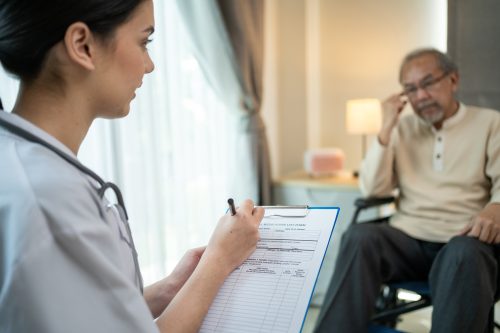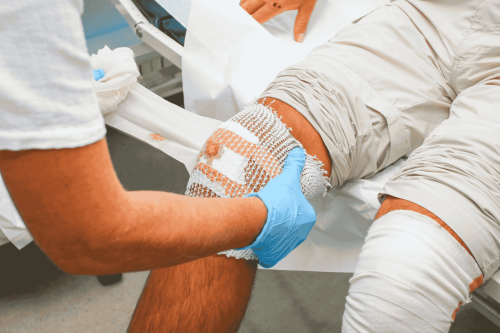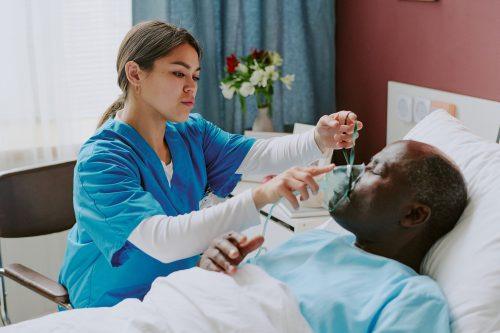Nursing homes should serve as sanctuaries of care, compassion, and safety for the elderly and vulnerable. Yet, abuse within these settings remains a pervasive and often hidden crisis, impacting countless individuals worldwide. Alarmingly, approximately 1 in 6 individuals aged 60 or older have experienced some form of abuse in community settings, including nursing homes, according to the World Health Organization (WHO). For healthcare providers, recognizing and addressing this issue is not just a professional duty but a moral imperative. Understanding the pivotal role of reporting nursing home abuse is crucial for fostering a culture of accountability and ensuring that residents receive the dignity, respect, and safety they deserve.
Understanding Nursing Home Abuse

Nursing home abuse can manifest in various forms, including physical, emotional, sexual, financial, and neglect. Each form of abuse leaves distinct scars on victims, from visible injuries to profound psychological trauma.
Healthcare providers often serve as the first line of defense against such abuse.
Their unique position allows them to observe subtle signs of mistreatment that others might overlook. But recognizing abuse is just the beginning; effective reporting mechanisms are crucial to addressing and preventing these violations.
Our online course, ‘Abuse, Neglect, and Exploitation in Nursing Homes Training,’ equips healthcare providers with the knowledge and tools to identify, report, and prevent abuse, ensuring a safer environment for residents.
Why Reporting Matters
- Protecting Residents: Reporting abuse ensures immediate intervention to protect the resident from further harm. Every report is a step toward safeguarding the dignity and safety of vulnerable individuals.
- Holding Perpetrators Accountable: Timely and accurate reporting leads to investigations that can hold abusers accountable. Without accountability, patterns of abuse can persist unchecked.
- Fostering a Culture of Transparency: Regular reporting and a zero-tolerance approach to abuse signal that mistreatment will not be tolerated, fostering a safer environment for residents and staff alike.
- Preventing Future Incidents: Reporting incidents contributes to systemic changes by highlighting areas of concern and prompting reforms in policies, training, and oversight.
Barriers to Reporting
Despite its importance, underreporting of nursing home abuse is a widespread issue. Healthcare providers face several barriers, including:
- Fear of Retaliation: Staff members may fear retribution from colleagues or employers for reporting abuse.
- Uncertainty About Evidence: Providers might hesitate to report suspicions without concrete evidence, fearing false accusations.
- Lack of Training: Many healthcare professionals are not adequately trained to recognize or report abuse.
- Cultural and Systemic Factors: Cultural stigmas and systemic inadequacies can discourage reporting, especially in underfunded or poorly managed facilities.
Recognizing the Signs of Abuse
Healthcare providers must remain vigilant for signs of abuse, which can include:
- Physical Signs: Unexplained bruises, burns, or fractures, along with frequent hospitalizations for preventable issues.
- Emotional Signs: Sudden changes in mood, withdrawal, fearfulness, or unusual silence.
- Neglect Indicators: Malnutrition, dehydration, poor hygiene, and untreated medical issues.
- Financial Abuse: Sudden changes in financial circumstances or missing personal belongings.
By understanding these indicators, providers can take swift action to protect residents.
The Reporting Process
Effective reporting requires a structured approach:
- Immediate Action: If abuse is suspected, healthcare providers must ensure the immediate safety of the resident. This may involve moving the resident to a safer location or contacting emergency services.
- Documentation: Detailed documentation is crucial. This includes recording observations, dates, times, and any statements made by the victim or witnesses.
- Following Protocols: Most facilities have established protocols for reporting nursing home abuse. Providers should familiarize themselves with these guidelines to ensure compliance.
- Contacting Authorities: In many jurisdictions, healthcare providers are mandated reporters. They must notify local or state authorities, such as adult protective services or law enforcement, of suspected abuse.
- Advocacy and Support: Beyond reporting, providers can connect residents and families with advocacy groups or legal resources to ensure continued support.
The Role of Technology in Reporting
Advancements in technology have transformed how nursing home abuse is reported and addressed:
- Electronic Health Records (EHRs): EHRs allow for better tracking of patient conditions, making it easier to identify patterns indicative of abuse.
- Reporting Hotlines and Apps: Dedicated hotlines and mobile apps streamline the reporting process, ensuring anonymity and ease of use.
- Data Analytics: Analyzing data trends across facilities can uncover systemic issues and highlight high-risk areas.
Healthcare providers can leverage these tools to enhance their reporting efforts and contribute to a safer environment for residents.
Overcoming Barriers to Reporting
Healthcare providers can address barriers to reporting through:
- Training and Education: Regular training sessions on recognizing and reporting nursing home abuse equip staff with the necessary skills and confidence.
- Encouraging a Speak-Up Culture: Facilities should promote an environment where employees feel safe reporting concerns without fear of retaliation.
- Streamlining Reporting Mechanisms: Simplified and accessible reporting processes reduce the burden on staff and encourage prompt action.
- Collaboration with Advocacy Groups: Partnering with organizations that specialize in elder care can provide additional resources and support.
The Broader Impact of Reporting
When healthcare providers commit to reporting nursing home abuse, the effects extend beyond individual cases:
- Improved Resident Outcomes: Addressing abuse promptly leads to better physical and mental health outcomes for residents.
- Enhanced Facility Reputation: Transparent and proactive facilities earn the trust of residents, families, and regulatory bodies.
- Policy and Legislative Changes: Data from abuse reports can influence laws and regulations, driving systemic improvements in elder care.
Conclusion
The role of healthcare providers in reporting nursing home abuse cannot be overstated. By identifying and reporting abuse, providers become advocates for justice, safety, and dignity for some of society’s most vulnerable members.
Every report is a call to action—a reminder that abuse has no place in caregiving. Together, healthcare providers, facilities, and society at large can create an environment where residents not only survive but thrive in comfort, security, and respect. The journey begins with recognizing the power of reporting and embracing it as a cornerstone of ethical and compassionate care.
Ensure compliance, boost efficiency, and foster trust by enrolling your large team in our customized, free course development program today. Click here.



